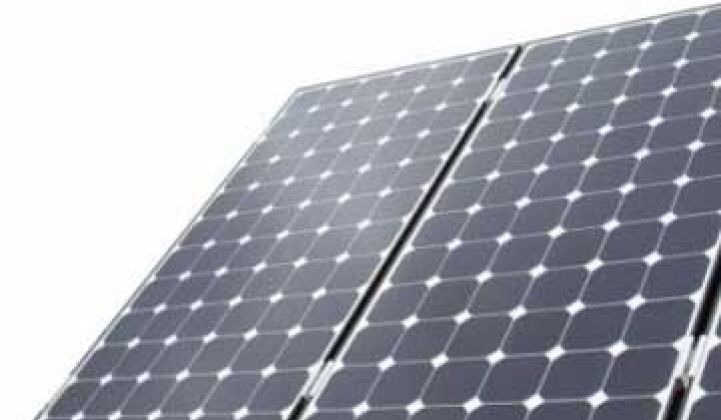In crystalline silicon, the end isn't here, but it's coming into view.
Silicon solar cells, according to various researchers, will not be able to convert more than 29 to 33 percent of the light that strikes them into energy. Realistically, the limit is likely closer to 24 to 25 percent because of factors like heat, said Tom Werner, the CEO of SunPower, during a briefing with reporters late last week.
SunPower currently mass produces solar cells with a 22.5 percent efficiency and later this year will start to ship cells with an efficiency of just over 23 percent.
"It is very hard to get to 24 and 25 percent," he said. "The thermodynamic limit is around 25 percent with a pure silicon solution, but there are more innovation options that allow us to get more energy out of the module."
So what can a company that specializes in high efficiency solar panels do when faced with the principles of physics on one side and a rising tide of Chinese manufacturers bent on boosting their own efficiency?
Everything it can.
Internally, the company will explore technologies like concentrators, which increase the amount of light that shines on a solar cell, as well as other types of materials that can be added to cells to boost power output and efficiency, he said.
If history is any guide, solar manufacturers will somehow manage to circumnavigate the barrier. Hard drive makers like Seagate invested millions into optical storage, convinced that spinning drives faced an absolute wall in density. Ultimately, the industry blew past the mark with things like perpendicular storage. Chip designers have regularly hurdled seemingly impossible barriers.
The difference in the solar market is that it may not be able to pass the barrier through smooth, incremental, Moore's Law-like progress. The 29 percent barrier has existed for years. Progress may come in surges and that could favor or hurt companies like SunPower and impact the market dynamics, depending on the timing and circumstances. Bet on the wrong technology and premium pricing may be tough to justify.
Depending on the type and amount of new material added, it will come down to a debate over whether these hypothetical panels can be called crystalline silicon. The absolute record for efficiency belongs to a cell constructed of multiple layers of silicon, gallium and indium at the University of New South Wales, sporting 43 percent efficiency that could well be a hit in the market if it also wasn't too costly right now to mass produce.
Work also continues on improving absorber layers that can prevent sunlight that strikes a solar cell from escaping. While SunPower's cell efficiency is in the 22 percent range, the module efficiency rating is a few points lower.
Perhaps more importantly, SunPower will concentrate on the balance of system to reduce cost and/or extract more energy from modules. Although not as glamorous as cell design, installation can account for a large portion of a solar project. In recent years, Solar City, Sungevity and Global Solar Center have devised software that trim project planning and estimating costs, while Akeena Solar, GreenRay, Zep Solar, Armageddon Energy and Sollega have devised all-in-one panels and new racking systems to cut costs. (Installation will be one of the chief topics at Greentech Media's Solar Summit taking place March 30 and 31 in Phoenix.)
SunPower currently makes a tracker, the T20, which holds solar panels at about a 20 degree angle and then tilts them from east to west during the day to track the path of the sun. The combination of the mounted angle and tilting can boost energy output by up to 30 percent, according to other SunPower execs. Tilting alone can boost power production by 4 to 10 percent.
The T20 right now is used in large, utility-scale deployments, like the 14 megawatt solar field at Nellis Air Force Base, while more standard trackers are deployed for commercial solar panel parks. In the future, it might be possible to shrink the motors and other components to put T20-like trackers in smaller environments.
"We probably have more resources on system design and grid integration than we do on the cell itself," he said. "If you have a tilted tracker that is cost-effective, you multiply all of that work on the cell by 1.3."
SunPower will also look at ways to reduce the electrical work and other construction tasks that take place on-site.
At the moment, Werner asserts the company has a technological lead. Suntech Power Holdings and a number of other solar manufacturers have launched efforts to boost high efficiency efforts. SunPower, though, still holds a lead in absolute efficiency
"The competition in the premium segment, let's call it high efficiency, is mostly talk. We don't see Chinese companies competing with us directly on energy density," he said. "We still have a significant competitive advantage in terms of technology. The only firm that is comparable to us is Sanyo."
Sanyo makes two-sided solar panels.



